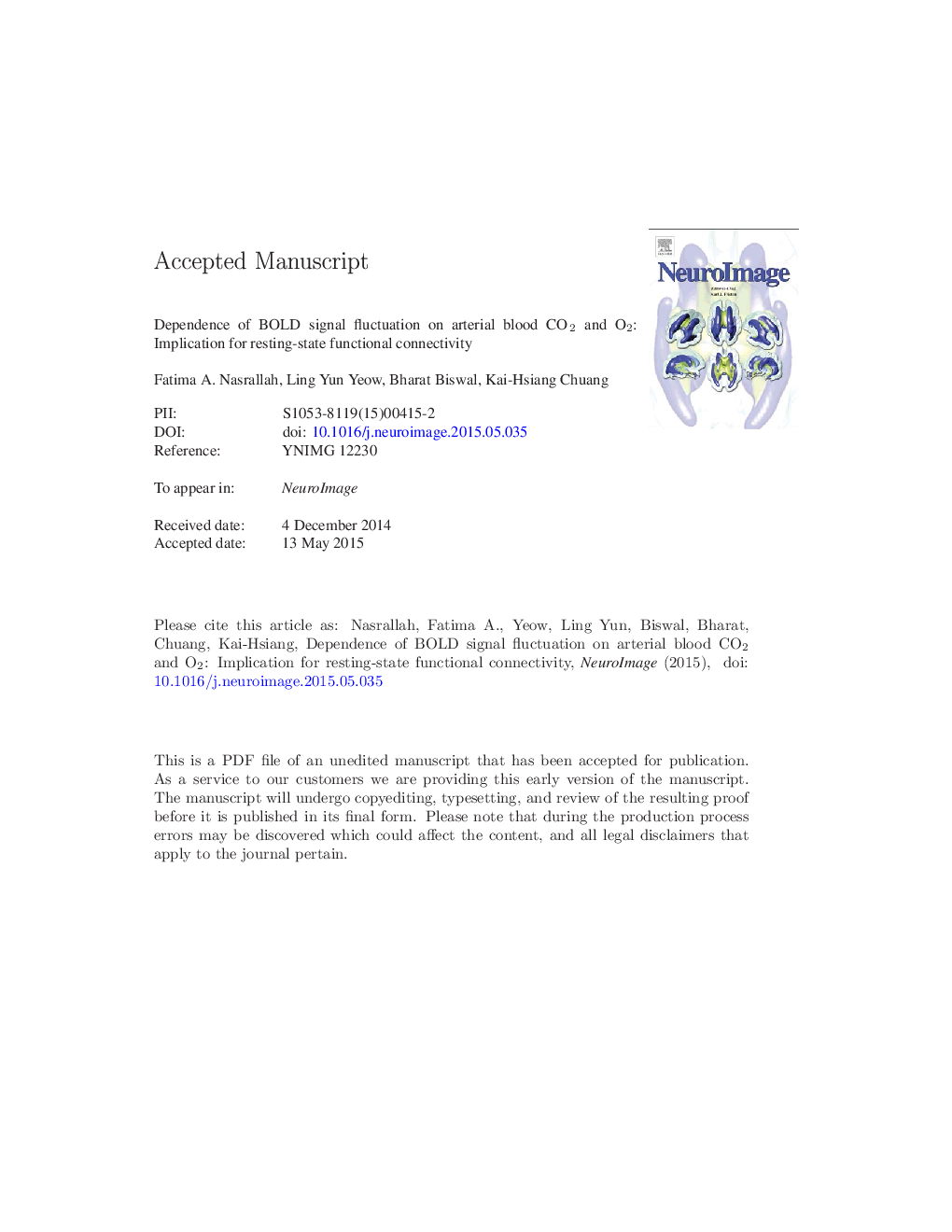| Article ID | Journal | Published Year | Pages | File Type |
|---|---|---|---|---|
| 6025005 | NeuroImage | 2015 | 35 Pages |
Abstract
Blood oxygenation level dependent (BOLD) functional MRI signal is known to be modulated by the CO2 level. Typically only end-tidal CO2, rather than the arterial partial pressure of CO2 (paCO2), was measured while the arterial partial pressure of O2 (paO2) level was not controlled due to free breathing, making their contribution not separable. Especially, the influences of paO2 and paCO2 on resting-state functional connectivity are not well studied. In this study, we investigated the relationship between paCO2 and resting as well as stimulus-evoked BOLD signals under hyperoxic and hypercapnic manipulation with tight control of arterial paO2. Rats under isoflurane anesthesia were subjected to six inspired gas conditions: 47% O2 in air (Normal), adding 1%, 2% or 5% CO2, carbogen (95% O2/5% CO2), and 100% O2. Somatosensory BOLD activation was significantly increased under 100% O2, while reduced with increased paCO2 levels. However, while resting BOLD connectivity pattern expanded and bilateral correlation increased under 100% O2, the correlation coefficient between the left and right somatosensory cortex was generally not dependent on paCO2 or paO2. Interestingly, the correlation in 0.04-0.07Â Hz range significantly increased with CO2 levels. Intracortical electrophysiological recordings showed a similar trend as the BOLD but the neurovascular coupling varied. The results suggest that paO2 and paCO2 together rather than paCO2 alone alter the BOLD signal. The response is not purely vascular in nature but has strong neuronal origins. This should be taken into consideration when designing calibrated BOLD experiment and interpreting functional connectivity data especially in aging, under drug, or neurological disorders.
Keywords
Related Topics
Life Sciences
Neuroscience
Cognitive Neuroscience
Authors
Fatima A. Nasrallah, Ling Yun Yeow, Bharat Biswal, Kai-Hsiang Chuang,
